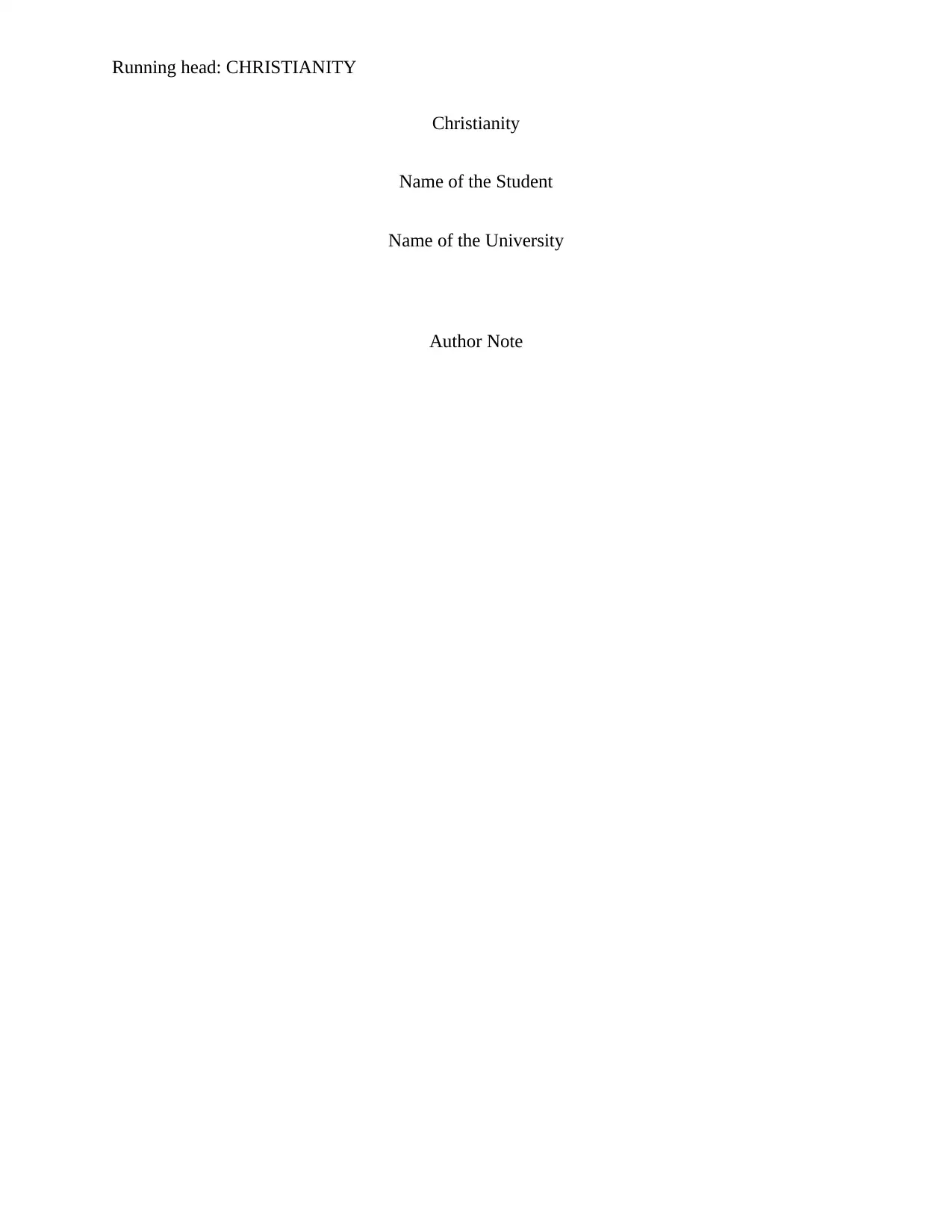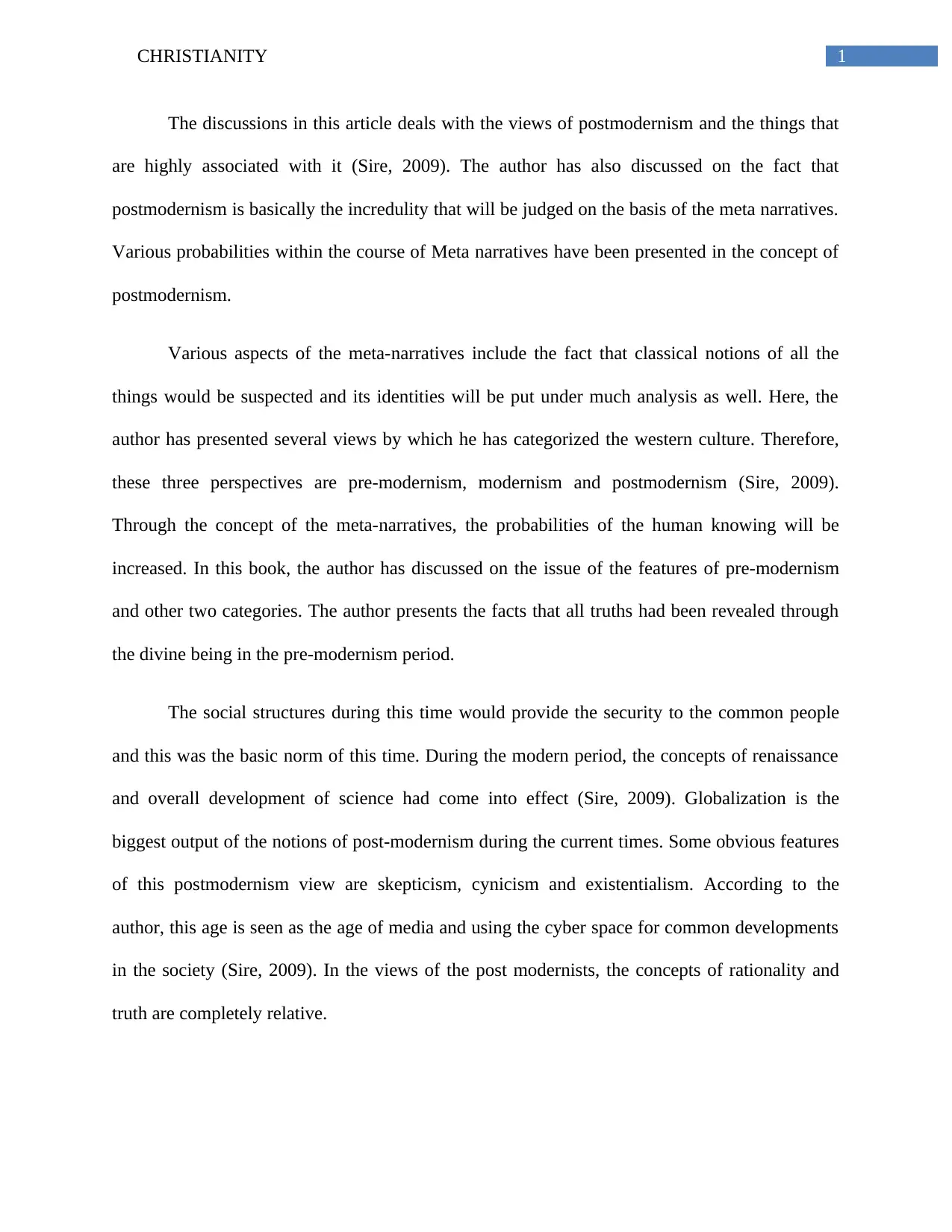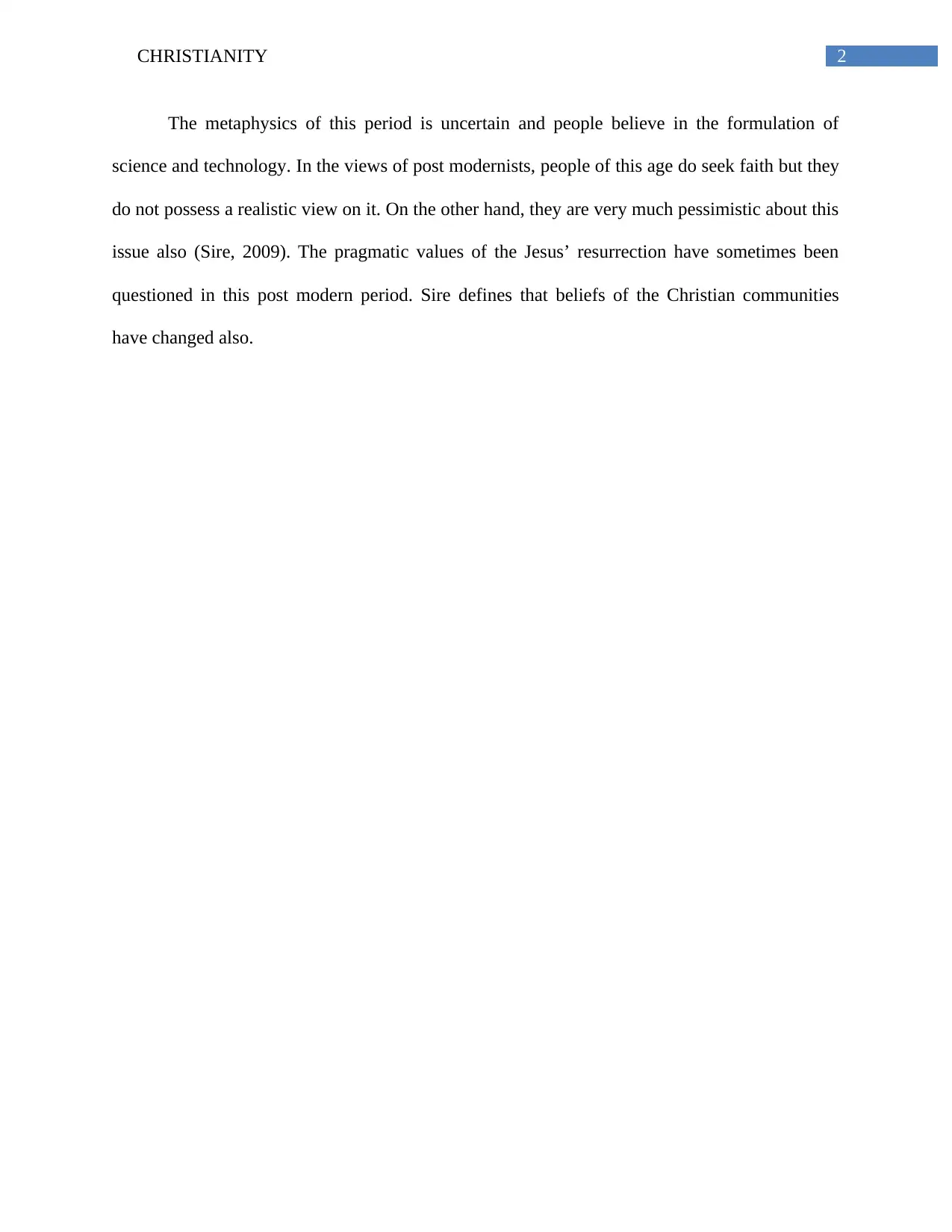Analysis of Postmodernism's Impact on Christianity: Report
VerifiedAdded on 2022/08/23
|4
|449
|30
Report
AI Summary
This report examines the influence of postmodernism on Christianity, focusing on Sire's views and the concept of meta-narratives. It begins by defining postmodernism as a reaction to modernism, characterized by skepticism towards traditional notions of truth, reason, and universal progress. The report explores how postmodernism challenges classical notions, identities, and objectivity, leading to a more contingent and diverse understanding of the world. It contrasts pre-modern, modern, and postmodern perspectives, highlighting how postmodernism fosters incredulity towards meta-narratives and emphasizes the relativity of truth and rationality. The analysis discusses postmodernism's impact on Christian beliefs, the questioning of pragmatic values, and the shift in the Christian community's worldview. The report concludes by summarizing the key features of postmodernism, including skepticism, cynicism, and existentialism, and its implications for faith and societal developments. This report provides a comprehensive overview of the subject matter.
1 out of 4






![[object Object]](/_next/static/media/star-bottom.7253800d.svg)